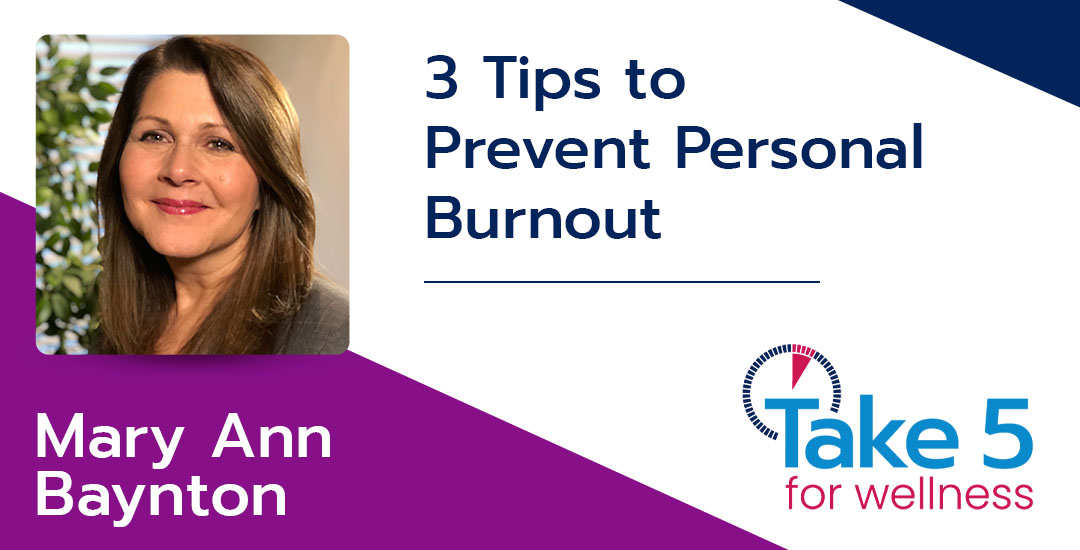In 2004, Mary Ann Baynton was diagnosed with burnout. What she remembers most is the depletion of energy—and while she never stopped working, she describes it more as “plodding along with extreme effort.”
At the time, Baynton was providing leadership training to support employee mental health. She describes her recovery “as some of the most difficult months of my life. The irony of working in the field of mental health and burning out myself was not lost on me.”
Her experience helped fuel her decision to establish Mary Ann Baynton & Associates, a workplace relations firm. And since 2007 she has been the Director of Collaboration and Strategy for Workplace Strategies for Mental Health, a website with tools and resources available at no cost to Canadian employers and employees, funded by Canada Life.
If you personally feel you may be struggling with burnout, the Workplace Strategies website provides many suggestions for prevention and self-care. Baynton also highlights three preventive measures she continues to use today:
1 – Slow down “I slow down the way that I think, the way that I talk and the way I move. That may sound simplistic, but it can make a profound difference.” Why is slowing down important? Because when you’re working hard to get many things done, the mind tends to go “200 miles an hour and you’re always thinking about what else you need to do.” That’s a sure route to loss of concentration, feelings of anxiety and lower productivity.
2 – Be present This tip builds on the first. You need to focus on what you’re doing right now. “If you’re talking to a family member, give them your full attention. If you are writing a report, try to remove yourself from other distractions.” When you are present in the moment you lessen the stress that comes from trying to focus on the never-ending list of things to do.
3 – Prioritize (and get help with that) Prioritize three things a day to get done. This can be a combination of personal and professional tasks. “You will always have more than three things on your to-do list but having the ability to say, ‘I did those three that were most important today,’ gives a sense of accomplishment that can be energizing.”
As well, don’t hesitate to get help with prioritizing. Why? In part because the side effects of trying to do too much may be putting in effort that nobody really asked for, or seeing everything as important. “You may feel compelled to go above and beyond even when it’s not required, and that puts your health and your performance at risk,” says Baynton. To stay on track, review your priorities with a co-worker or your boss.
For more on burnout, read “Employee Burnout: What Employers Can Do”

This article is part of Benefits Alliance’s Take 5 for Health Benefits Initiative. Take 5 provides a deeper look at employee health benefits, drawing from the experiences of plan sponsors, subject matter experts and the latest research. The Take 5 newsletter is delivered quarterly to plan sponsors across Canada.
